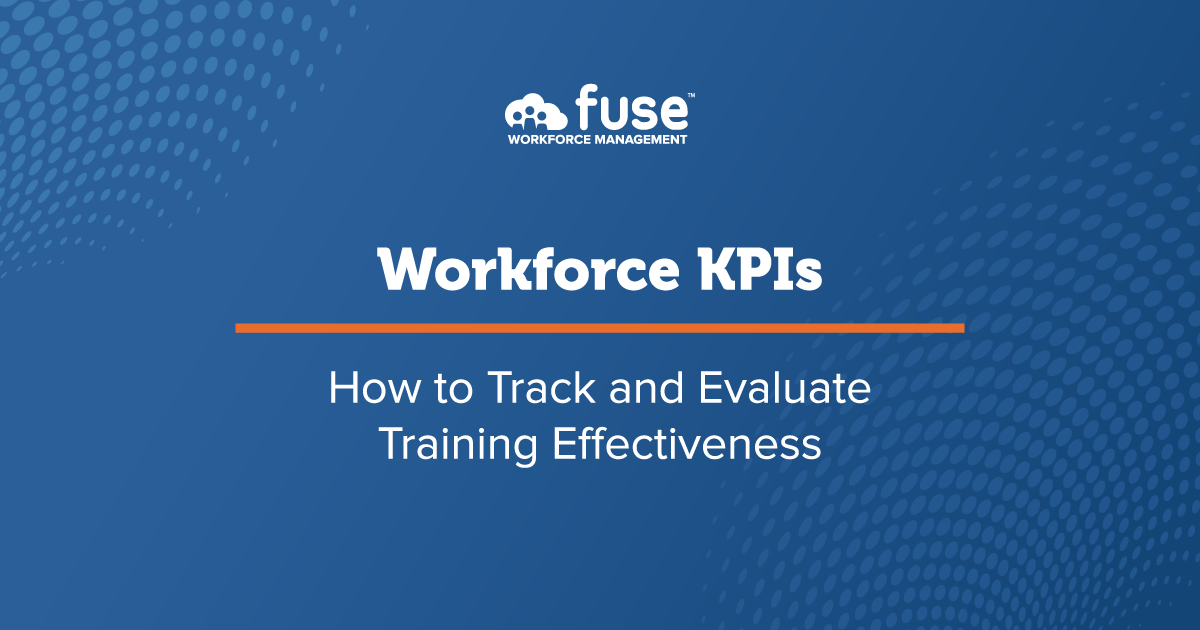Training is one of the most effective ways to improve employee performance. It is also time-consuming and can be expensive, so you want to be sure it's meeting your goals. If you want to know how effective your training is, you should measure and assess it. Understanding its cost and impact on employee performance will help you evaluate whether it is effective.
Why Training Is Essential to HR
Training activities typically benefit both employees and the business. Additional education, on-the-job training, and upskilling help employees feel more confident doing their jobs. Because employees are more likely to stay if they're comfortable doing their work, training activities can improve productivity and retention rates. Training employees to be more confident in their roles makes everyone happier – customers, managers, and employees – which tends to make human resources happier too. Training can improve performance, boost productivity, increase morale, and even affect company culture.
Of course, some kinds of training are not optional. Most people have had to experience "required HR training" sessions on sexual harassment, ergonomics, or HIPAA compliance. Some industries require their employees to be trained on safety matters. Others must master a specific software suite. Many modern companies include culture-changing training on topics related to diversity and inclusion, interpersonal communication, organizational leadership, and more. When training experiences are added to a company’s workforce, it’s helpful to understand their impact.
When it comes to tracking training, there are good reasons to go further than to mark a "completed training" checkbox. Investigating and measuring a training program's effectiveness provides a wealth of information that can affect a company's productivity – and bottom line.

Evaluating and assessing the effectiveness of the training can help answer questions about training experiences, which may be helpful for leadership.
- Is the training meeting our goals?
- Is it benefiting the company?
- Is it helping our employees?
- Is it worth the expense?
- Does this training need to be changed or updated?
- Is there something that we should include that we currently aren't?
Assessments help to answer these questions and more. The results of those assessments can reveal interesting things. The best training opportunities leave everyone with improved skills and memorable takeaways and effectively meet your goals.
Assigning and Tracking Training Activities
Many businesses have a training plan that helps new employees get ready for their jobs, maintain required certifications and qualifications, and meet compliance requirements. Fuse can help HR, managers, and employees keep track of required training activities so nothing is missed. Automated reminders notify the appropriate parties until the training activity is complete and can start up again when a credential is about to expire.
It can be incredibly time-consuming to track who needs what training and whether an employee has completed it. No two companies are the same, and every company has unique requirements. While some are universal, training needs usually vary by role. An office worker is unlikely to need pesticide application training, and an exterminator probably doesn't need to understand how the marketing email program works. Even on a small scale, manually tracking and managing training activities over the lifecycle of an employee is a big job.
Fuse Workforce's system makes managing, tracking, and reporting all of this much more manageable. We'll help you create custom training profiles based on the training activities required for each job role or situation, like employee onboarding. We can also include details about the training activities, including the instructor, time commitment, and cost.
For example, an insect management company may have specific qualifications and annual certifications that exterminators need, but office administrators don't. The training profile in the system will automatically assign a training list to those with the exterminator role so they know what training activities they have to do. The individual tasks can include access to the training tools, like documents, videos, presentations, or instructions for accessing a learning management system.
Human resources can easily see who has – and hasn't – completed their required or requested training activities, how well the employee completed training, what it cost, and more.
Setting Training Goals
Every training activity should have a goal and a key metric to measure its success. Fuse's comprehensive goal tracking tool can manage these, and leadership, managers, and even employees can add and manage goals throughout the year. You'll evaluate the success of the training based on how well it succeeded at meeting the goals you've set for it.
Here are some examples.
- 80% of staff will attend free interpersonal communications training offered by an external company. A goal could be as simple as getting people to take advantage of training. If you’re trying to foster a more supportive work environment to further your DEI goals, for example, you might set a goal that 80% of the staff will participate in a communications workshop offered during the work day.
- Training attendees will experience 20% fewer workplace accidents over six months following the training. Training can be reactionary or preventative, or a bit of both. If a company has experienced increased employee accidents while working, it might offer new safety training. If there is a 20% reduction in accidents over six months following the training, the goal has been met.
- The "I am happy at work" question on anonymous employee surveys will improve by one point. If there's dissatisfaction or unhappiness, a business might invest in training its managers to become better at their jobs. Employees can take a satisfaction survey about happiness at work, both before training and then after a specific amount of time has passed. The first survey is a baseline, and ideally, the second survey shows that happiness is improving.
- 90% of staff will complete the training with a 70% or better grade. A simple grade goal may provide enough information to determine whether it was successful or not.
- New hires will be able to use essential software for daily tasks within six weeks. New employees are inundated with training activities when they are ramping up into a new job. Balancing acclimation with overwhelm is a delicate task. Clear goals and objectives can help to ensure that the onboarding process is successful, which benefits the new hire and your company.
Reviewing the success of training is considered one of the most critical HR metrics to follow.
An evaluation can help show if the goals were met. If goals are not met, the training activities should be reevaluated, and the reasons for not meeting the goals should be explored. Once you know how much it cost, how many people took it, and whether it met the goal you set, you can report on the overall success of the training activity.
Evaluating Training Effectiveness
![]()
Once you have set your goals and started tracking, you can evaluate whether the training was effective. Depending on your goals, this can require additional data.
Let's say that Jan, the HR director of a midsize delivery company, has been informed that customers have reported multiple minor policy violations. There have also been several minor traffic incidents that appear to be due to driver inattention. Jan's goal is to reduce violation reports and accidents by at least 50%.
To achieve this, Jan decides that all drivers will take a refresher class designed for adult drivers. The company invests in a training program with paper and road tests, for which staff will receive a grade. The training requirements are tracked, as are test results. To round out the evaluation, Jan conducts an employee survey asking if drivers understand company policies better, learn valuable information, and feel like safer drivers after taking the class. Jan also has access to financial data, including repair and downtime costs for vehicles involved in an incident.
After six months, Jan reviews the number of policy violations that have been reported to see if they've changed – ideally for the better.
Jan may discover that the training made a big difference – drivers report feeling like safer drivers, and the violation reduction goal was met, even if they got a low passing grade. Jan may also uncover that the number of accidents and policy violations did not improve for those who didn't take the class.
Additionally, Jan can look at cost data and see that although the class cost may have seemed high, each driver who took it was eligible for an insurance discount. The reduction in accidents meant that not only were there fewer repair costs, but more vehicles were on the road more often, improving productivity, efficiency, and the bottom line.
Ideally, your evaluation will be able to draw a clear connection between your goals and outcomes related to the training activity. In addition to training, Fuse's system provides ways to gather information like employee feedback surveys and other information needed to draw sound conclusions. Once you have your goal in mind, our customer success team can guide you through the data you'll need to collect and help you set it up with Fuse's all-in-one configurable tools. You'll then see – and be able to share with your leadership team – how your training activities affect your employees and business.

